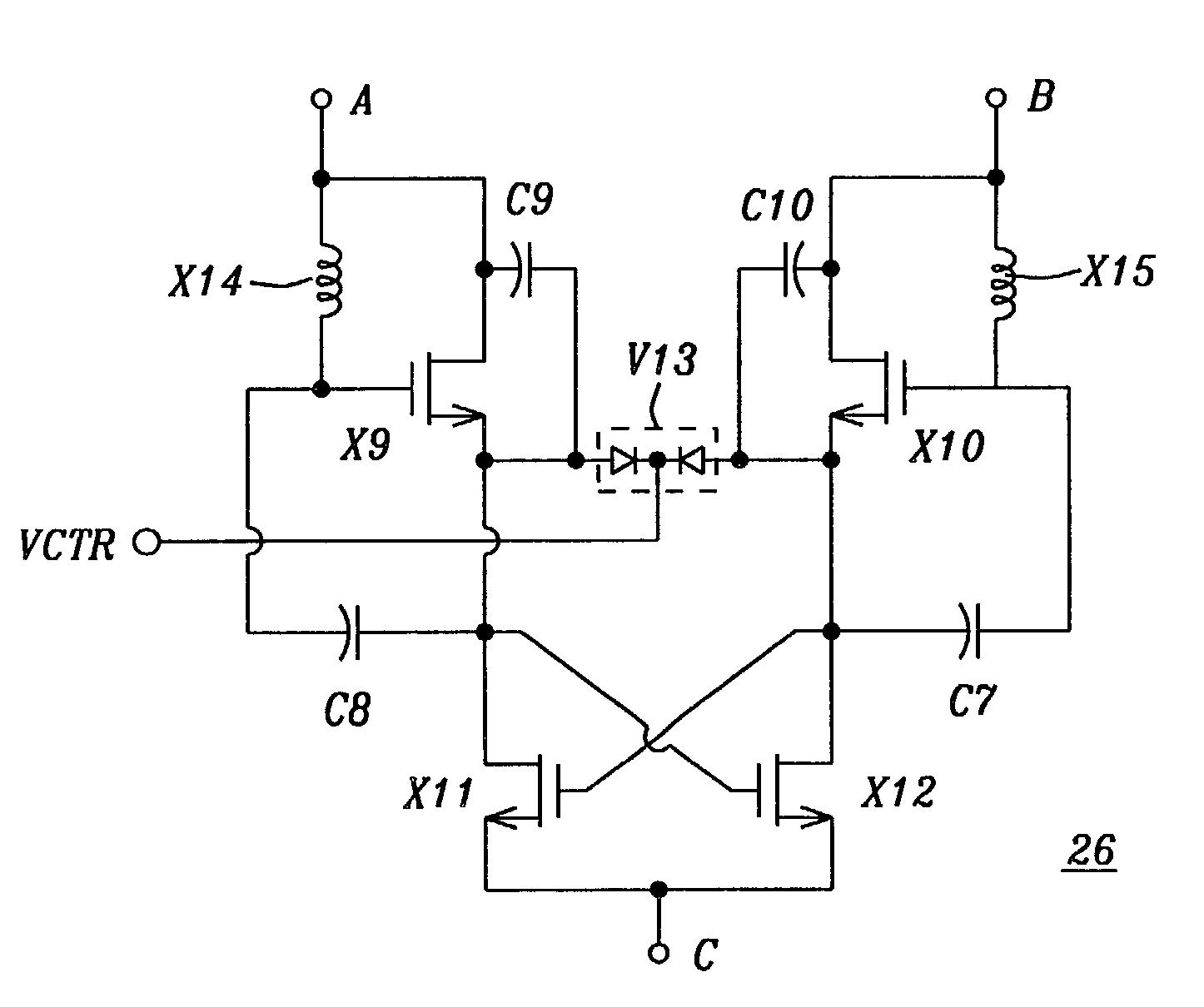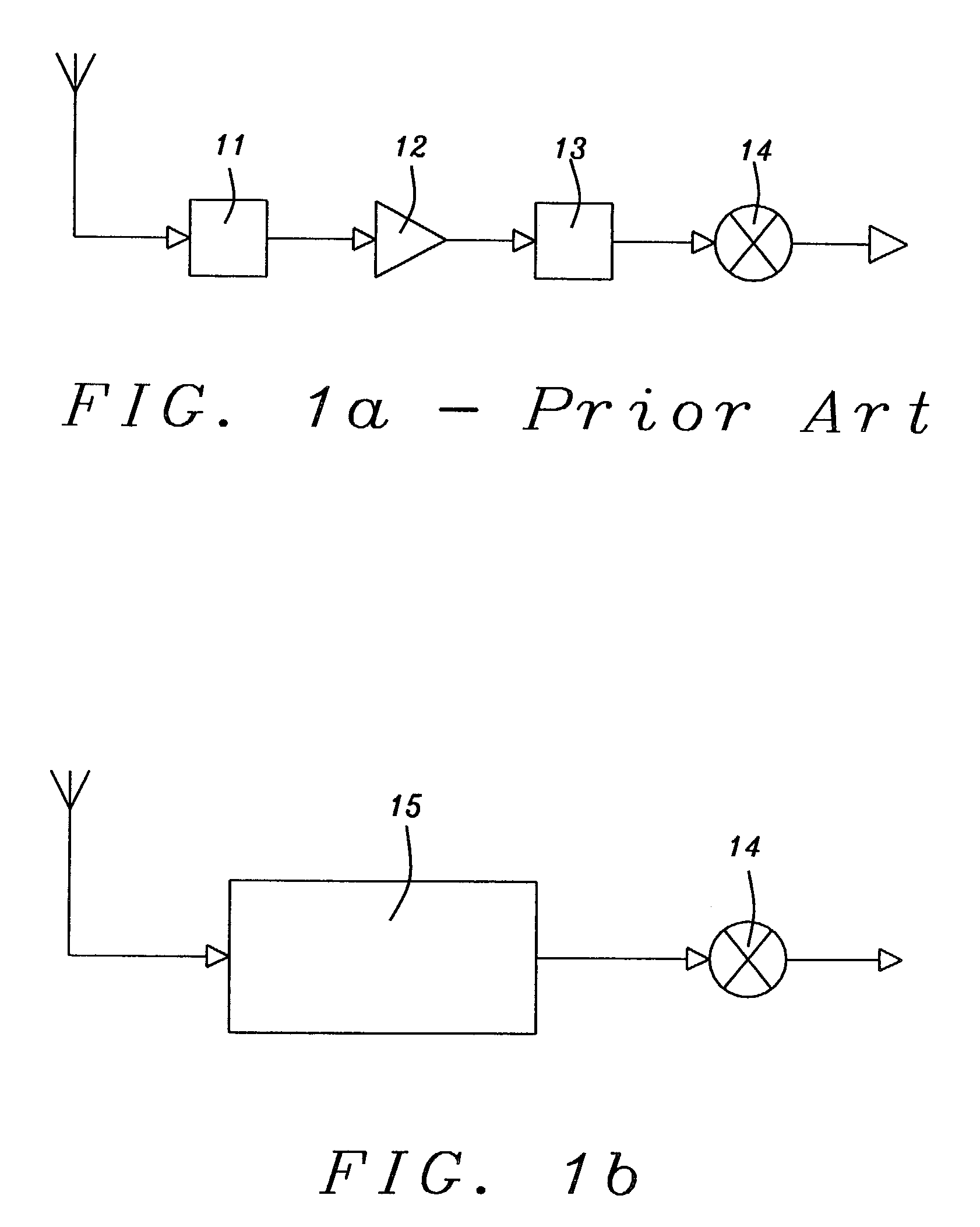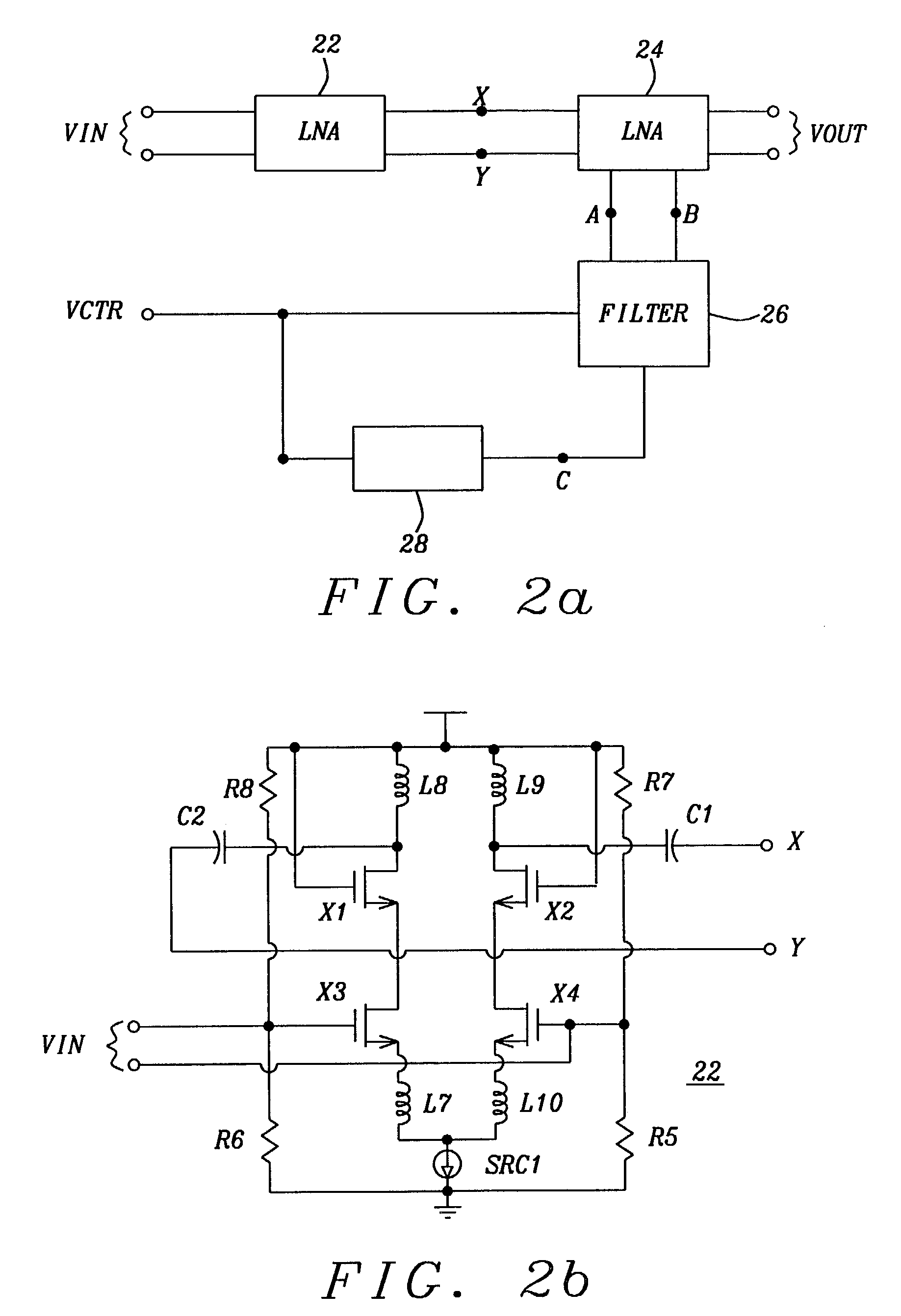Wideband monolithic tunable high-Q notch filter for image rejection in RF application
a monolithic, wideband technology, applied in the direction of impedence networks, electrical equipment, transmission, etc., can solve the problems of difficult to achieve high image rejection, i/q amplitude imbalance, and the image rejection ratio (irr) provided by these methods is very sensitive to i/q amplitude imbalance, etc., to achieve good image rejection, high image rejection, and wide tunable range
- Summary
- Abstract
- Description
- Claims
- Application Information
AI Technical Summary
Benefits of technology
Problems solved by technology
Method used
Image
Examples
Embodiment Construction
First Preferred Embodiment: A Wideband Notch Filter with Automatic Tuning
[0063]A first preferred embodiment of the inventive notch filter integrated with an LNA is shown in high level block diagram form in FIG. 2a and will be further described in the following text with reference to FIGS. 2b, 2c, 2d and 2e. FIG. 2a shows a first stage LNA 22 with input port VIN, a differential output coupled via terminals X and Y to a similar second stage LNA 24 with output port VOUT (terminal 2 and terminal 3). Coupled to LNA 24 via terminals A and B is notch filter 26. The notch filter is connected both directly, and via tunable current source 28, to input port VCTR.
[0064]A two stage LNA design is employed to achieve the required gain and noise figure. It has power gain of 20–25 dB and small noise figure (22, as illustrated in FIG. 2b, consists of the cascode transistors X1–X4, with two LC tanks connected at the gate and source degeneration provided by the inductors L7 and L10. LC tank components ...
PUM
 Login to View More
Login to View More Abstract
Description
Claims
Application Information
 Login to View More
Login to View More - R&D
- Intellectual Property
- Life Sciences
- Materials
- Tech Scout
- Unparalleled Data Quality
- Higher Quality Content
- 60% Fewer Hallucinations
Browse by: Latest US Patents, China's latest patents, Technical Efficacy Thesaurus, Application Domain, Technology Topic, Popular Technical Reports.
© 2025 PatSnap. All rights reserved.Legal|Privacy policy|Modern Slavery Act Transparency Statement|Sitemap|About US| Contact US: help@patsnap.com



